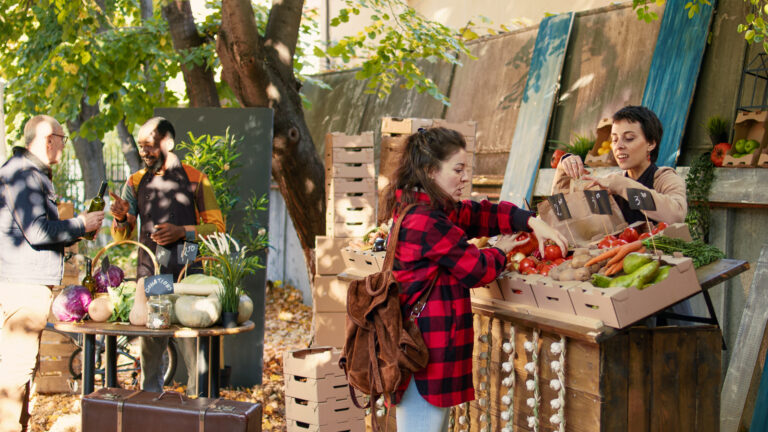Theme
Natural Systems, Observation, Permaculture Design Thinking
Activity Duration
1.5 – 2 hours
Group Size
4–20 participants
Objectives
- Introduce youth to the concept of natural patterns in ecosystems
- Develop ecological observation and interpretation skills
- Explore the role of patterns in permaculture and design
- Stimulate personal creativity and connection to natural rhythms
Description
Permaculture teaches us that nature is our greatest teacher, offering design
solutions that have evolved over billions of years. When we begin to
observe natural systems closely, we uncover something extraordinary —
patterns. Spirals, branches, waves, webs, and cycles — these aren’t just
beautiful forms; they are the language of life. They show up in rivers, roots,
weather systems, and even in our bodies.
Understanding patterns in nature is a foundational step in permaculture
thinking. It shifts us from simply “doing sustainability” to deeply thinking
regeneratively. When we learn to “read” the landscape, we begin to see
how water moves, how energy ows, how living things adapt and thrive.
These patterns offer clues on how to design gardens, homes, and
communities that work with nature, not against it.
This activity invites youth to slow down and enter a state of curious
observation. Through visual exploration and group reflection, they’ll begin
to see the recurring forms that shape our world. More importantly, they’ll
explore how these patterns can inspire human creativity — from
permaculture garden design to community networks to personal growth.
Materials/Tools
WS2.1 Pattern Cards (1 set per small group)
-
WS2.2 Pattern Observation Sheet (1 per participant)
-
WS2.3 Pattern-Inspired Design Template (1 per participant or team)
– Clipboards or notebooks
– Colour pencils or pens
– Natural samples or printed pattern photos (optional)
Resources to be developed:
RESOURCE WS2.1: Pattern Cards
Printable cards or a poster featuring visual examples of natural patterns:
Spirals (e.g., snail shells, hurricanes)
Branching (e.g., trees, rivers, lungs)
Waves (e.g., dunes, sound, water ow)
Tessellations (e.g., honeycombs, cracked mud)
Nets/Webs (e.g., mycelium, spider webs, neural networks).
Each card
includes:
A vibrant photo or drawing
A description of the pattern and where it appears in nature
A reflection prompt: “What does this pattern tell us about energy or flow?”
RESOURCE WS2.2: Pattern Observation Sheet
A4 worksheet for outdoor or sit-spot work:
Title: “Patterns I See in Nature”
Sections:
Date / Location
Pattern Spotted (choose from card types or draw your own)
Sketch space with frame
Describe the pattern in your own words
What might this pattern help nature do?
My thoughts or feelings about this pattern
RESOURCE WS2.3: Pattern-Inspired Design Template
Worksheet or poster-sized format for use in small groups or solo work:
Central prompt: “Design a space inspired by a pattern in nature.”
Include:
Choose your pattern (or combine)
Sketch/design area
Notes on what elements you would include (plants, pathways, energy flow)
Re ection box: “How does this design re ect nature’s wisdom?”
Encourage use of colour, natural materials, or collage to bring designs to
life.
Space (indoor, outdoor,
settings…)
Outdoor environment such as gardens, forests, parks (primary setting)
-
Indoor area for sketching and group reflection (optional)
Structures/steps (timing)
1. Introduction to Patterns – Share the idea of natural patterns and show
WS2.1 cards. Discuss where patterns show up. (10 mins)
2. Observation Time – Walk or sit quietly in nature and fill out WS2.2 with
drawings and thoughts. (30–40 mins)
3. Sharing Circle – Share discoveries and meaning of patterns seen. (10
mins)
4. Pattern Design Challenge – Using WS2.3, create a space (garden, room,
or system) based on one or more observed patterns. (30 mins)
5. Presentation & Reflection – Share designs and discuss how nature
inspired the choices. Optional extension: connect designs to permaculture
systems. (15 mins)
Evaluation System/Tools
– Completion of WS2.2 with clear observations and interpretation
– Evidence of thoughtful pattern application in WS2.3 design
– Participation in group sharing and ability to explain choices
– Creativity and ecological awareness shown through artistic outputs
This activity can connect to:
Mapping your eco-in uence



